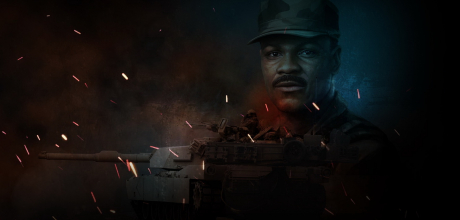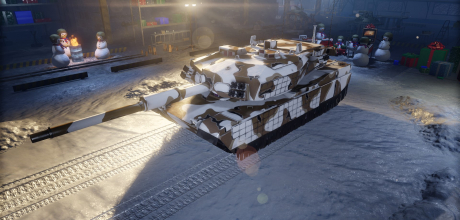
Commanders!
The XM247 Sergeant York stands today as one of the most infamous armored vehicle development programs in the history of the U.S. Army. It was an interesting vehicle to be sure, but the problems with it were so severe that cancellation was the only outcome that could have been reasonably expected by the time the trials were over. In Armored Warfare it will get the chance to redeem itself on the field of battle but, first, let us take a look at how the whole debacle came to pass before we dive into the details of its introduction to the game.
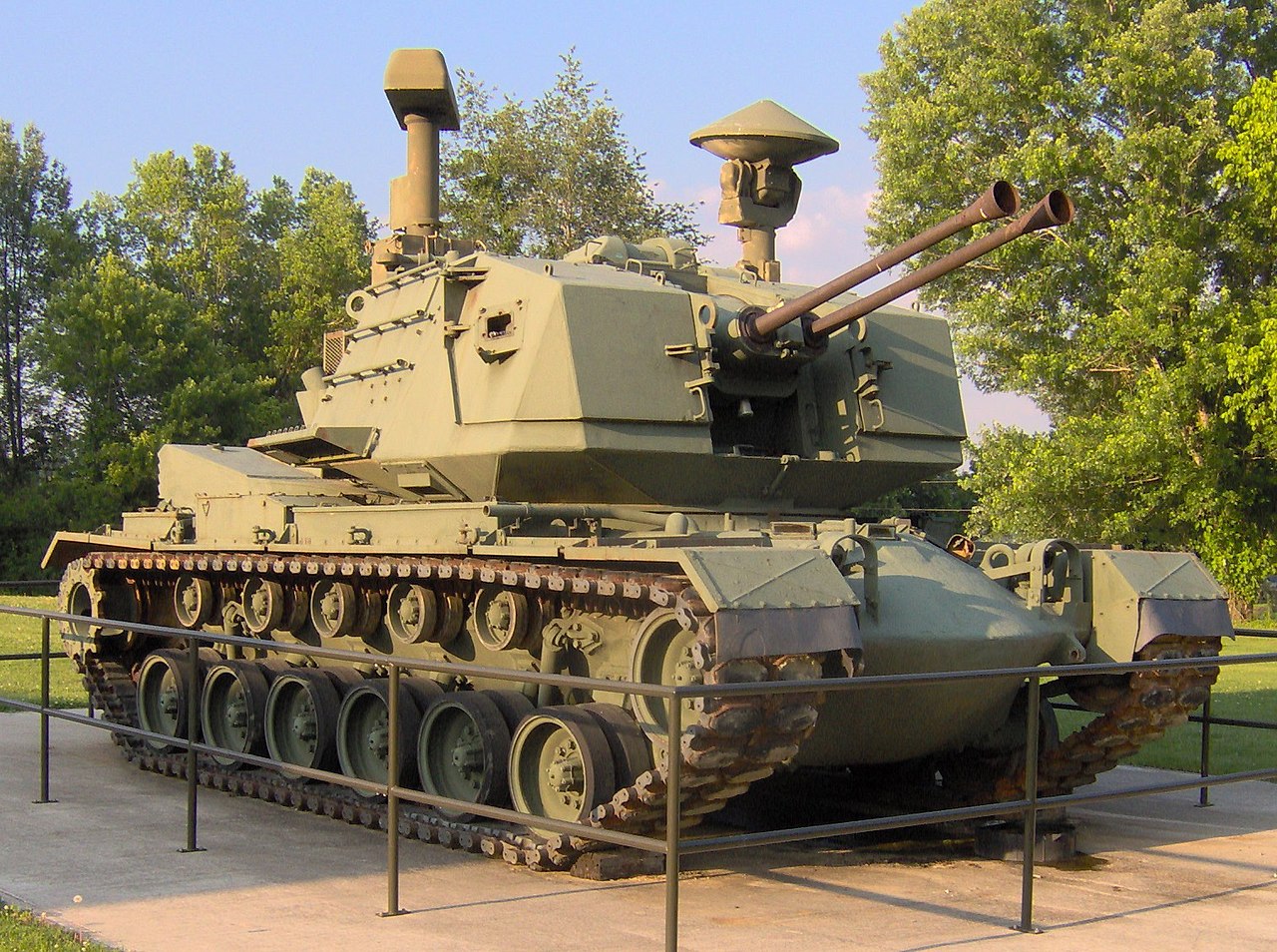
M247 Sergeant York on display at Sgt. Alvin C. York State Historic Park, Tennessee
In the beginning, there was the U.S. Army need to have an armored self-propelled anti-aircraft gun that would be able to accompany mechanized American units and provide protection against enemy helicopters and low-flying attack planes. This requirement eventually led to a program called DIVAD, which was already described in detail in our dedicated article.
Long story short, several companies applied to develop such a self-propelled gun, including Ford, General Dynamics, General Electric (with its Avenger cannon on an M48 chassis, also currently available in Armored Warfare), Raytheon and Sperry (with a design based on the earlier Vigilante.)
In 1978, two most promising designs – General Dynamics’ XM246 and Ford’s XM247 – were declared the winners of the program and that’s where our story begins. Ford’s design was named the Gunfighter and was, like the other DIVAD designs, built on an M48A5 chassis (M48A5 was the last mass-produced variant of the M48 Patton with diesel engine). It was armed with two 40mm L/70 Bofors guns with a combined rate of fire of 600 rounds per minute.
These weapons were both a blessing and a curse. On the downside, they were quite old and – to a degree – obsolete. On the upside, this meant that not only were they tried and true and the U.S. forces were familiar with them, but also the fact that ammunition was readily available. Both guns were installed in a large, boxy two-man steel turret and targeted by a radar system derived from the Westinghouse radar used in the F-16 Fighting Falcon fighter jets.
The adversary in the competition was the XM246 design by General Dynamics. It too had automatic cannons but, unlike the Gunfighter weapons, of different brand and caliber. The XM246 was armed with two NATO standard 35mm Oerlikon KDA guns with a combined rate of fire of 1100 rounds per minute. The turret was also different (lower) and was controlled by a radar system derived from the one used on the Phalanx CIWS, designed by the same company.
Both companies received a contract for two prototypes each on January 13, 1978, and were delivered until July 1980. At that point, they underwent several rounds of extensive testing, including their participation in actual army training exercises and mock battles. During the tests, they were put against both low-flying planes and helicopters and were run for prolonged periods of time in order to determine their durability and ease of maintenance.

XM246
The lessons learned from the comparison were that the type of ammunition used was equally, if not more, important than the gun caliber or the rate of fire. Even though the 35mm system had almost the double rate of fire of the 40mm Bofors guns, it shells were smaller and, more importantly, were triggered by impact, which required a precise hit of the target. The 40mm shells, on the other hand, had proximity fuses, which allowed them to create a storm of shrapnel in the air that would seriously damage any aircraft that entered it. Even though a similar fuse was later developed for the 35mm caliber, the smaller 35mm shells could not create the same fragmentation effect in the air.
Or, that was the official version. In reality, the whole game was rigged from the start. For example, during the trials, the XM247 was able to hit only less than a half of the targets the XM246 did. This failure was “solved” by the evaluating body (Army’s Ballistic Research Laboratory) treating all 40mm proximity fuse explosions like direct hits, while all similar indirect hits by 35mm shells were disqualified based on the argument that they used non-regulation fuses.
As a result of this very creative results interpretation, the XM247 won the contest in 1981 and Ford Aerospace was given a contract to start producing this system in larger numbers (a total of 618 vehicles was planned) starting from 1982.
The XM247 received an official name “Sergeant York” after one of the most famous and most decorated American soldiers of the Great War and an all-round badass, Alvin C. York. Additionally, the letter X was dropped from the nomenclature, effectively indicating Sgt. York’s acceptance in service.
The M247 weighed some 55 tons and was operated by three men (two in the turret and the driver in a standard M48 position in the front). The hull offered the same protection levels as the M48A5 Patton:
- Upper frontal hull plate: 110mm (angled at 60 degrees)
- Lower frontal hull plate: 102-61mm (angled at 30 degrees)
- Side hull armor: 76-51mm
- Hull top: 57mm
The steel turret, however, was only relatively lightly armored – after all, the vehicle was not supposed to be engaging enemy tanks or anything like that. Additional protection was provided basically only by the ability to generate smoke.
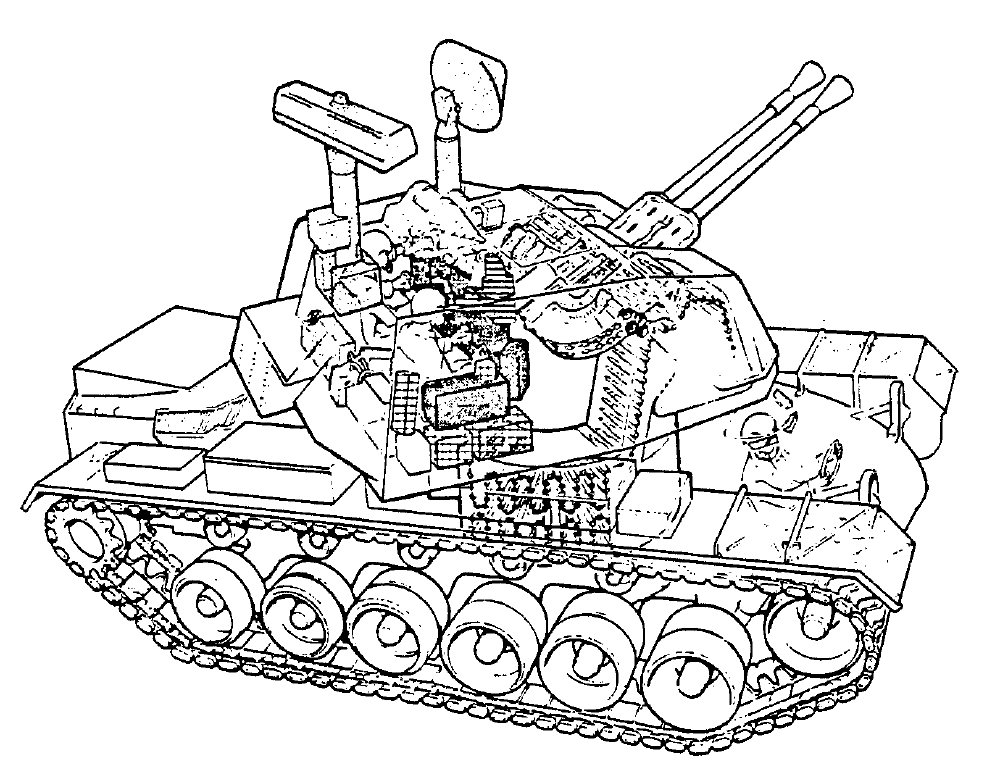
M247 Schematics
The vehicle was powered by the same engine as the original M48 – an AVDS-1790-2D 29-liter V12 supercharged diesel producing some 750 gross horsepower. The engine was coupled to an Allison CD-850-6A transmission, allowing it to go as fast as some 48 km/h on the road.
The main weapon system consisted of, like was mentioned above, two Bofors L/70 40mm automatic cannons that could depress to -5 degrees, elevate to +85 degrees and fire with a combined rate of fire of 600 rounds per minute. Both guns were belt-fed (each had a separate feed) from an ammo rack located below the turret. The ammo loadout consisted of several types of HE ammunition, although AP ammunition for the gun existed as well.
The turret was equipped with Westinghouse AN/APG-66 radar and a laser rangefinder. It had a hydraulic traverse system that allowed it to rapidly react to targets popping up around the vehicle (such as helicopters hidden behind hills). It’s worth noting that in order to ensure minimal engagement time, the entire system worked with minimal operator input and was more or less capable of aiming the guns at aerial targets on its own. That was, however, in the anti-aircraft mode. The system could be switched to anti-ground role as well, but that was mostly manual.
Now, as armored vehicle development projects go, this sort of fast jump from a development stage to actual production of what were basically still prototypes was almost unheard of outside of actual wartime. The reason why the U.S. Army allowed this was, however, logical. The winner of the contest, the M247, consisted of components that were all already in service and were therefore considered properly tested. In some cases like the vehicle’s Westinghouse radar, this was, of course, a bit of a stretch even though similar radar worked on the F-16 fighter jet, but generally speaking, the whole systems integration aspect would just get ignored until quite late into the development.
On the other hand, the U.S. Army wasn’t that stupid as to not include any failsafe into the contracts with Ford Aerospace. There were several, including an extended warranty for pre-production vehicles, costs ceilings and more than four dozen requirements specified. The idea was to produce a few vehicles, test them, fix any problems and test them again. And if there were too many problems, the producer would (thanks to the payment ceiling clause) pay for them from his own pocket. Legally, the whole thing was actually not bad for the G.I. Joe. The production was therefore launched in 1982 and the initial pieces went to the U.S. Army proving grounds in California to undergo a series of tests.
These tests would not go well and it was soon found out that Ford didn’t bother to fix a number of serious problems that had been discovered as early as in the pre-trial XM247 stage. Some tests, like the durability trials, were abandoned altogether since the vehicle was deemed unfit to even start them. There were serious problems with the radar system reliability, electronics of the vehicle kept switching off, the vehicle’s hydraulics were constantly leaking and the vehicle was basically incapable of operating at freezing temperatures.

M247 in Nevada
However, as baffling as it was, the production would continue due to a Department of Defense intervention, citing alleged evidence of Ford working on correcting these problems as well as the urgency to deploy such weapons systems in Europe. This decision was later found to have been made based on data someone from the U.S. Army tampered with – the weapon effectiveness was, for example, described by being 300 percent higher than the real value, as was the reliability of the systems electronics. Other pieces of data were intentionally obfuscated, such as the fact that the vehicle was capable of less than one third of the rounds it was supposed to during the testing and even that test was riddled with numerous weapon system failures. There were also serious price discrepancies between various documents and it was essentially one huge mess.
Naturally, the U.S. Army is a massive organization and such a scandal would not stay hidden for long. The press got the wind of the Sergeant York situation as early as in 1982, but it was a year later when things really started heating up. The production Sergeant York continued to be plagued by numerous issues. On the bright side, the trials gave us some of the funniest and most outrageous stories that became well-known amongst the fans of armored vehicles.
For example, when the system was being demonstrated to American and British officers at Fort Bliss, it would, upon activation, immediately swing its turret around and target the present officers standing on a tribune instead of the intended target (much to the embarrassment of the present members of staff). The technicians fiddled with the thing all day long, but it kept firing hundreds of meters away from the intended target and, despite their efforts, the problem could not be remedied. The Ford corporate representative on duty that day finally came with an explanation – the vehicle was washed the day before, which damaged its electronic components. After that, one of the officers sarcastically asked him whether it rains in Europe.
A few months later, upon activation, one Sergeant York immediately swung its turret around and aimed its considerable firepower at a spinning fan of local latrine it had mistaken for a helicopter rotor. Needless to say, since the latrine was not the intended target (which remained quite safe), the test ended up with another failure.
In another instance, the vehicle had so much trouble detecting a standard army target representing a helicopter that they had to install radar amplifiers on the target to make its detection easier. In the end, several were needed and after this event, one journalist described it as “testing a bloodhound's ability to track a man by covering him with beefsteaks and standing him still, alone and upright, in the middle of a parking lot.”
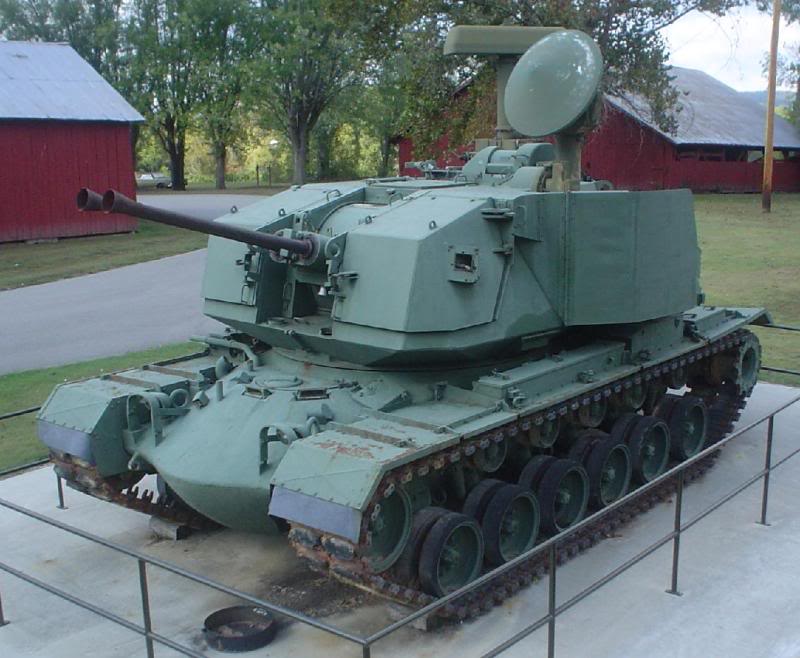
M247
Some journalists even made up stories about the system never hitting anything and that the U.S. Army would blow up target drones with explosives inside them to mask this. It wasn’t true but in the general light of this program’s failure, the public was more than willing to believe it.
The fiasco ended with Congress hearings and a final, official round of tests that took place in July 1984 at White Sands in New Mexico. These tests were to determine the fate of the entire program and the results were quite poor. It was concluded that while some progress had been made by Ford in remedying the worst problems, the system still performed well below the expectations and what was acceptable. The M247 could not even keep up with the vehicles that it was supposed to protect in battle (the Bradley IFVs and Abrams MBTs).
The final straw was the appearance of reports of new Soviet helicopter missiles in the mid-1980s. These missiles would outrange Sergeant York by a considerable margin (specifically, roughly two kilometers), making it obsolete even before the actual deployment.
At this point, the situation was untenable for the M247. Fraud allegations connected to the program were starting to make news and the program was finally terminated in August 1985. At this point, 65 M247 vehicles had been built and the entire program did cost the American taxpayer nearly two billion dollars (an equivalent of roughly four billion USD today).
A major investigation into the program was launched by the U.S. Department of Justice, only to be canceled a few years later with no specific outcome. The whole program was perhaps best epitomized by the fact that during its course or shortly thereafter, no fewer than six high-ranking U.S. Army officers (including four generals) would retire... to work for Ford as advisors.
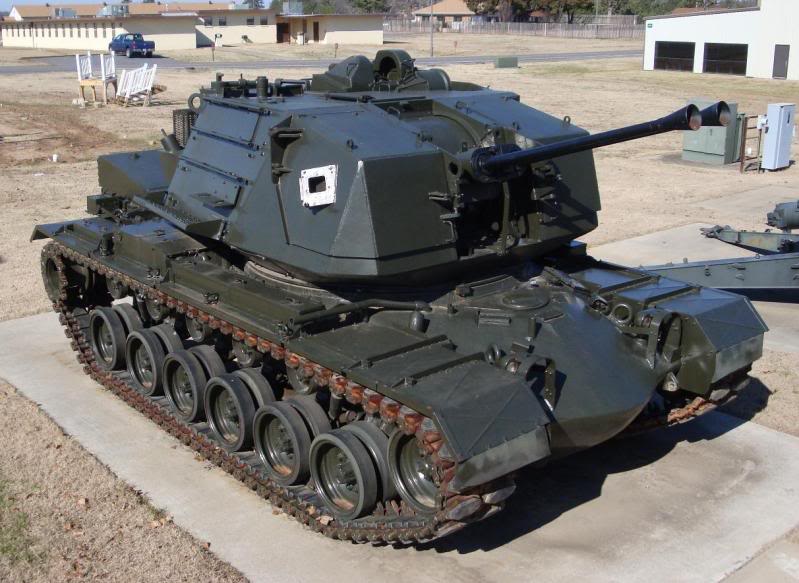
M247
And what became of the existing 65 M247 Sergeant York vehicles?
The U.S. Army, eager to quickly sweep this embarrassment under the rug, turned most of them into gunnery range targets, a sad end for this infamous vehicle. Several (approximately four or five) still exist today, three of them in museum conditions in the United States and one or two more as surviving range targets. But, given how the U.S. military now treats its historical vehicles, who knows what’s in store for them.
In Armored Warfare, the XM247 Sergeant York will be a Tier 5 Premium Armored Fighting Vehicle and the first Patriot Battle Path vehicle reward, obtainable for progressing through the Battle Path’s levels. It will be followed by the second, recently unveiled, Battle Path’s level prize, the Griffin 120mm Tier 8 Premium Light Tank.
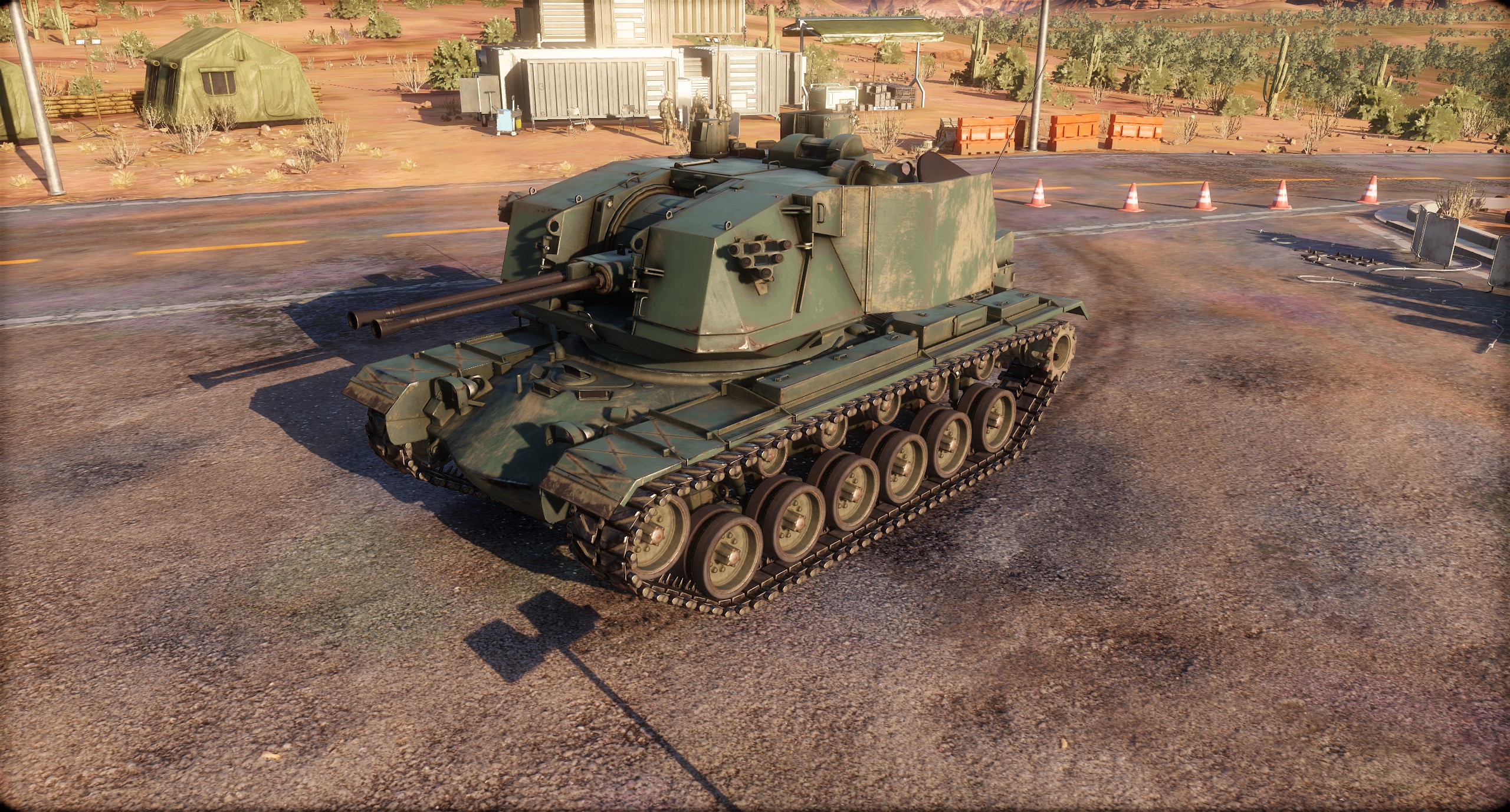
As its appearance suggests, it will be a somewhat heavy AFV with two guns and therefore plenty of firepower. But before we get into any details, the usual disclaimer:
The numbers below are very preliminary as the vehicle has not been properly tested. They are sure to change and should only be discussed as an indicator of how we’d like to set the vehicle up.
With that being said:
The XM247 will somewhat resemble a bigger, heavier, slower but also better armed and armored AMX-13 DCA AFV. Given its class, however, its armor will not be its main feature. While the hull (belonging to the M48A5 – in in-game terms, Magach 5 – MBT) will be able to withstand some fire, the large turret will be more or less vulnerable to everything, including lighter autocannons. This will not be a breakthrough vehicle, or even a frontline one.
Nor will it boast high mobility – with its hull and engine derived from a Patton tank, the acceleration and maximum speed will be roughly the same, although we will be giving it a more powerful 900hp engine than the original vehicle had in order to compensate for the extra weight of the turret.

Instead, the XM247 will be about mid-to-long range fire support. With its fairly accurate twin 40mm autocannons and its decent rate of fire (400 rounds per minute for both barrels combined), it’ll be able to lay down a hailstorm of steel and explosives at any target. The guns will fire either HE-I rounds (with that popular extra bonus to the chance to set your enemies on fire), or solid AP sub-caliber rounds with 200mm of penetration and 50 damage per shot.
Additionally, the guns will not fire in bursts – just press that left mouse button and keep the enemy in your sights. Doing this will naturally cause your accuracy to decay over time but firing in long bursts will be an option.
By now, you’re probably already running the numbers in your head – yes indeed, the vehicle will have very high damage per minute value, especially against lightly armored targets. The guns will also be quite comfortable to aim (-10/+85 gun depression and elevation, rapid turret traverse).
However, as you have probably guessed, the vehicle will not very stealthy given its large size. After all, it’s basically a Main Battle Tank chassis with an even bigger turret than the original MBT had. As a result, while the viewrange will be excellent (415 meters), the camouflage factor will be quite poor (16 percent).
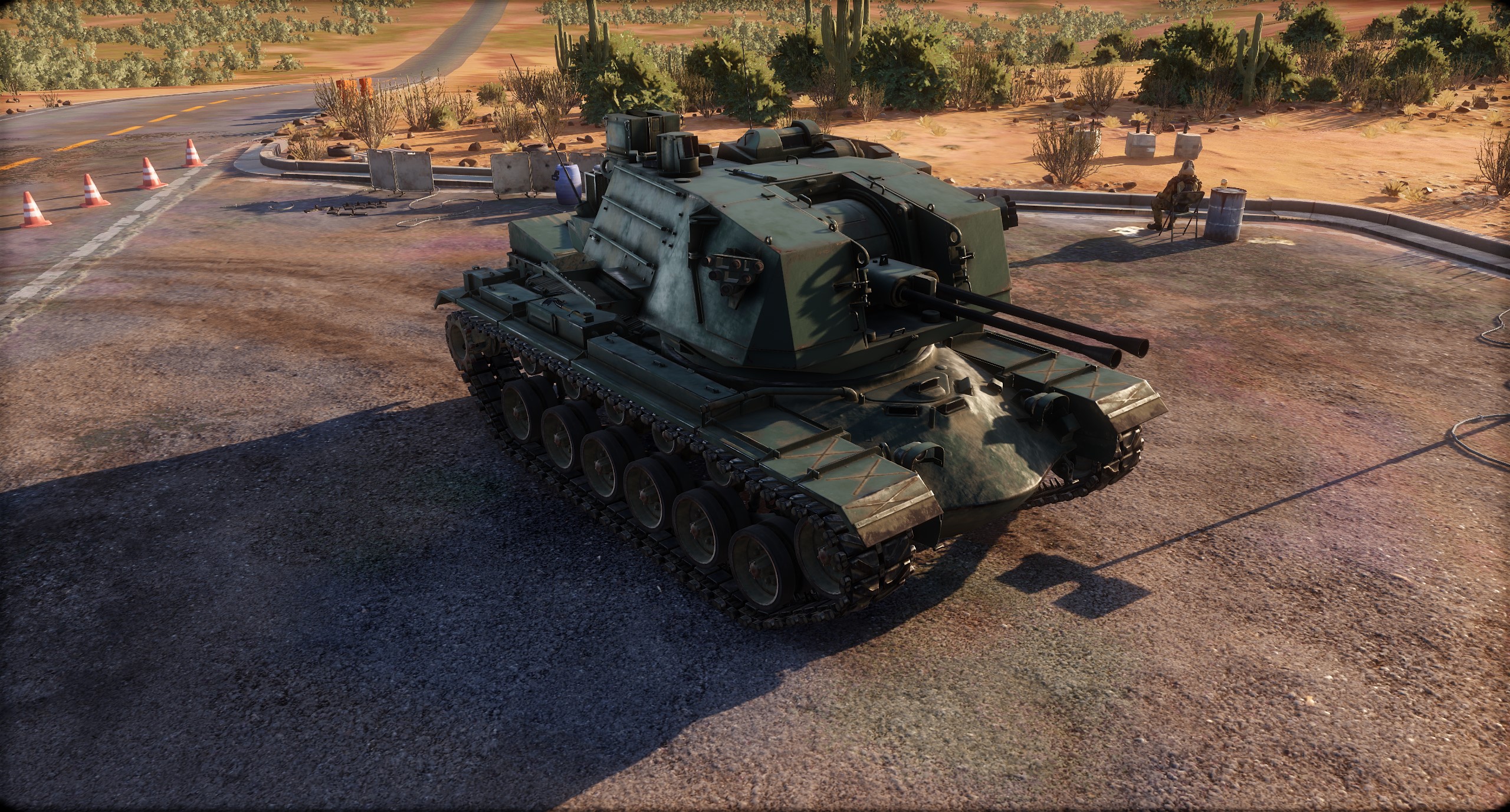
Sergeant York, however, has one last ace up his sleeve – the Radar active ability, allowing it to deploy its radar system to detect enemies at longer distances. Doing so will make you even more conspicuous than before (reducing the camouflage from 16 to 12 percent) but, at the same time, the viewrange will be increased from 415 meters to 450 meters.
We hope that you will enjoy this vehicle and will see you on the battlefield!




